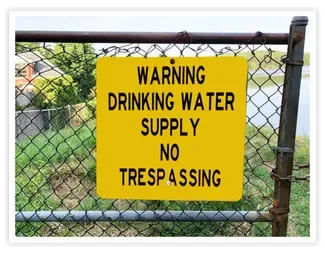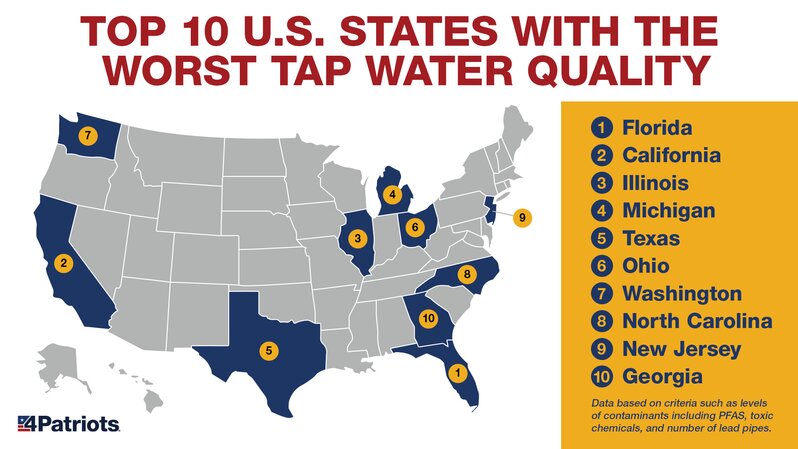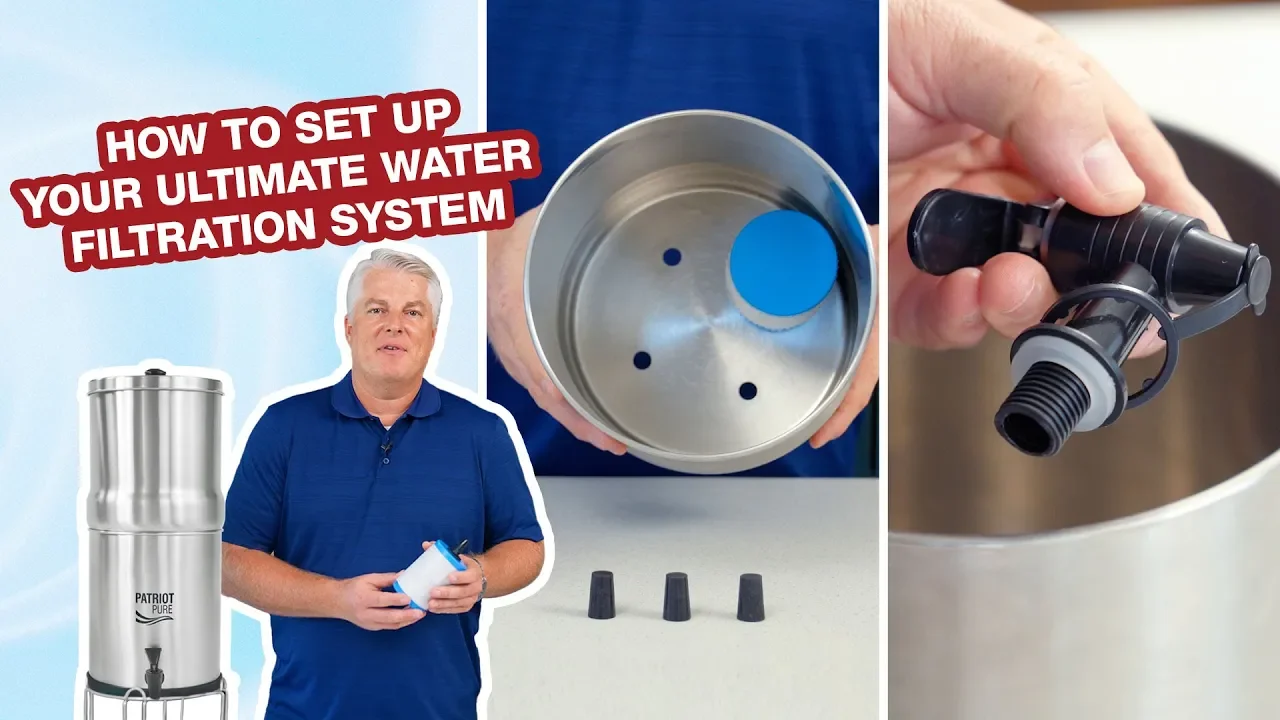Where Does Your State Rank in Water Quality?
The quality of tap water in America is far from ideal...
It can represent a danger to our health. But there are ways to improve it in your home. I’ll get to those ways in a moment. Plus, I’ll let you know if your state is one of the 10 worst for water quality.
“Our aging water infrastructure, particularly lead pipes, solder, and faucets, represents a community health hazard of enduring significance.” That statement came from the Department of Civil and Environmental Engineering at the University of Iowa.
First, I want to remind you that many states have water distribution systems with an average pipe age of 50 years. Some networks have subsystems more than 100 years old.
Thousands of pipes running from water mains to homes are made of lead. Not to mention the fact that plumbing inside old houses contains lead pipes. Or pipe joints with lead solder. As well as brass faucet fixtures containing lead.
When pipe deposits break free, small particles of lead leach into our tap water. And lead is just one of hundreds of harmful water contaminants. In fact, lead can cause serious damage to organs. And interfere with the body’s normal processes.

An ‘Immoral’ Action
One of the reasons water quality remains a problem in the 21st century is that water main work frequently falls short of completion.
Road crews often leave some lead pipe in the ground when they replace part of it with copper pipe. Water experts say that has occurred hundreds of thousands of times in America.
Many city officials don’t want to spend money to remove all lead piping. They say chemical treatments will take care of any problem. Some officials want to get rid of all of it. But they say there is no budget for it.
Yanna Lambrinidou is a medical anthropologist at Virginia Tech University. She told the Associated Press, “I can’t but think of partial replacements as immoral. Because they involve a witting decision by government agencies to leave residents at continued risk of exposure.”
Where Does Your State Rank?
So, how do you know if water coming out of your faucets is safe to drink? There are ways to test it. But first, let’s look at a recent analysis of water quality. It was based on criteria such as levels of contaminants including PFAS, toxic chemicals, and number of lead pipes.
According to their data, states with the worst tap water quality were:

Test It & Filter It
If you live in one of those states – or if you just want to make sure your water quality is good enough – ask your local health department if they have free water testing kits available.
If not, you could ask them to come to your home and check it. Especially if you express concerns about it.
Once you’ve done that, it would be a good idea to invest in a filter. There are plenty on the market. But do some research to make sure you’re acquiring one that gets rid of contaminants most likely to be found in your area.
The better filters will dramatically reduce a wide variety of contaminants. Including bacteria, viruses, and volatile organic chemicals. Plus pharmaceuticals, pesticides, and herbicides. As well as heavy metals. Like lead, mercury, chromium, copper, and aluminum.
Learn More >> Patriot Pure Ultimate Water Filtration System & Nanomesh Filter
Peace of Mind You Can Taste
Safety is the first thing we think about when it comes to water quality. After all, nobody wants to get sick from drinking contaminated water.
But taste is another issue. Clean water tastes better than contaminated water. Which means you will drink more of it. And that means you’ll stay better hydrated.
Another great reason for making sure your tap water is safe is the peace of mind you’ll get from knowing you don’t have to worry about it.
It’s difficult to put a price tag on that.

Top Emergency Essentials
References:
- All testimonials in this advertisement are from real people; sometimes names and photos have been changed to protect their privacy and some were given free products in exchange for their honest feedback. Testimonials represent exceptional results, don't apply to the average purchaser and are not intended to guarantee that anyone will achieve the same results. The organizations, publications and people referenced on this site are not affiliated with 4Patriots. They have not endorsed, sponsored or recommended this product; no affiliation or endorsement is claimed. Terms & conditions apply. Cade Courtley is a former Navy SEAL and Platoon Commander who served 9 years of active duty and has been compensated by 4Patriots for his hard work in helping us test and endorse this product. Cade Courtley is a former Navy SEAL who served 9 years of active duty and has been compensated by 4Patriots for his hard work in helping us test and endorse products.
